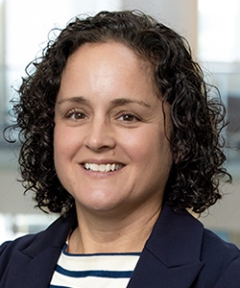Clinicians see pros, cons to telehealth �We�re doing whatever we can to get the service to our folks�

By Liz Beaulieu, Editor
Updated Fri June 12, 2020
YARMOUTH, Maine - Two clinicians provided a realistic view of what telehealth looks like in practice during a recent webcast sponsored by NCART, NRRTS, U.S. Rehab and The Clinician Task Force.
For Jennifer Lewis, telehealth has come in handy for deliveries, but she hasn't used the technology for evaluations, primarily due to insurance restrictions. Lewis, PT, DPT, ATP, of Tidelands Health Rehabilitation Services in Myrtle Beach, S.C, works with children with developmental disabilities. Since April, she has used telehealth for about 10 deliveries, or about 50% of all deliveries.
“They've gone pretty successfully,” she said. “The delivery is going out with the supplier. Our telehealth is based through our EMR system. There's a waiver signed by the parent and then documentation guidelines to bill off a checklist.”
Still, there have been “stressful situations” using telehealth, like the time a child with a supplier fell backward in a stander.
“That has been one of the cons,” she said. “You just can't get there to assist, even though you're communicating constantly with the supplier, the parents and the nurse in the room.”
There's also the work involved. Lewis says she has to prepare for the visit, conduct the visit and then follow up after the visit.
“It's three times the amount of work,” she said.
A major advantage of using telehealth, though, has been the view it provides into a patient's home, Lewis says.
“There's been a huge advantage to assess the home environment—how the room is set up, how the house is set up—where when they're coming into clinic, you don't get that full view,” she said. “Even how the parents are transferring them from the bed to the chair. You get a whole new enlightened view.”
For Jill Sparacio, “Telehealth is of no value in my facility because the facility won't let the suppliers in, either. Telehealth in my definition is me standing in a hallway looking 20 feet down at a resident in their chair who desperately needs growth modifications, so I eyeball it.”
Sparacio, OTR/L, ATP/SMS, ABDA, of Sparacio Consulting Services, contracts with a long-term care facility in the Chicago area for people with intellectual disabilities and medical complexity. She has been working with the case managers to determine what adjustments need to be done to their residents' wheelchairs. The case managers then transfer residents to beds, while she works on their wheelchairs from a distance.
“I get the chair, I disinfect it, I do the modifications and I disinfect it again, and then we do the same thing—I peer down the hallway to see how they look,” she said. “I've also done this through big windows.”
Sparacio continued, “We're doing whatever we can to get the service to our folks.”
Comments